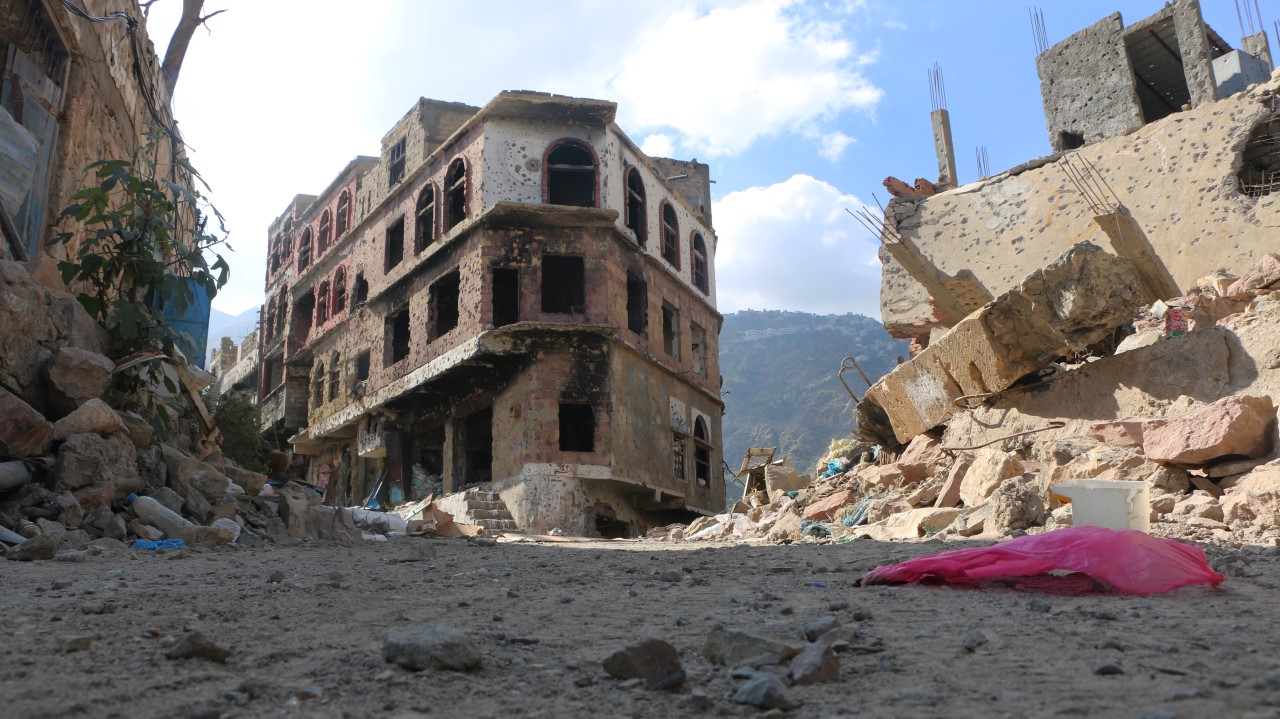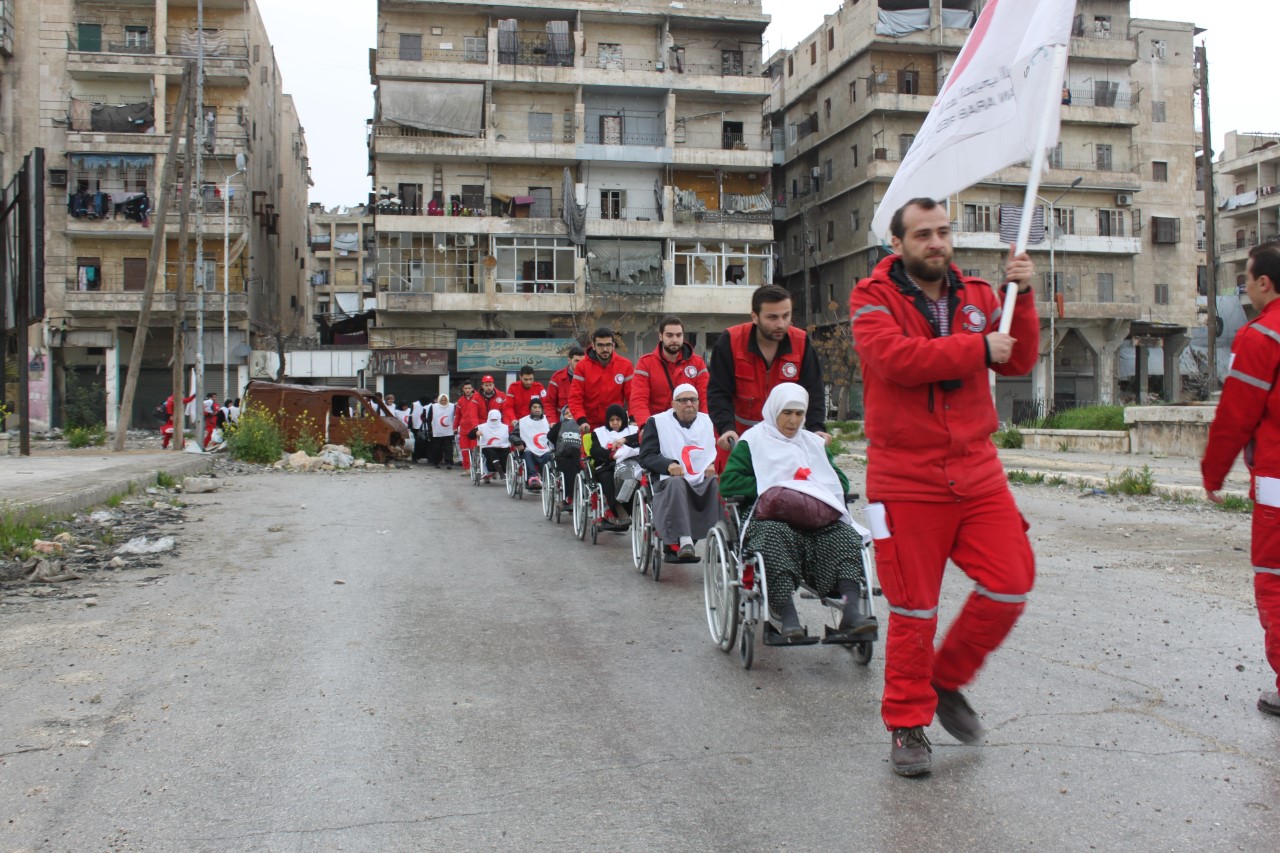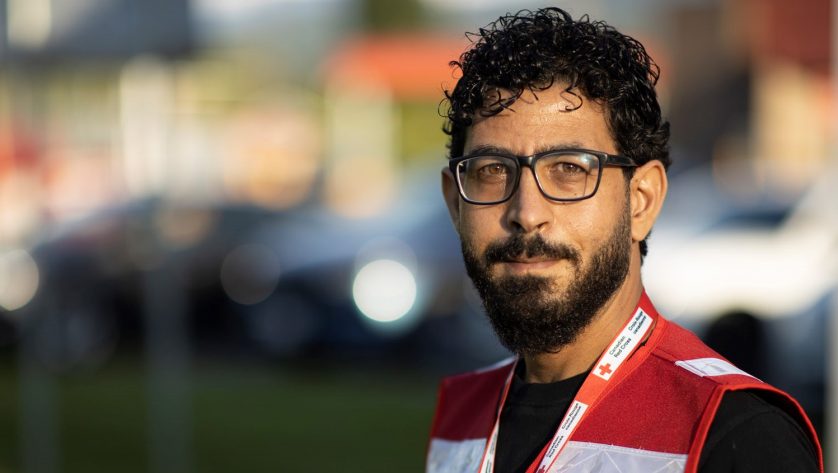Located in south-western Yemen, only an hour’s drive from the Red Sea, the ancient city of Taiz was once known as the country’s industrial base, a centre for the production of coffee and Yemen’s cultural capital.
Today, much of Taiz is in ruins, with many of the city’s trademark brown-and-white bricked buildings reduced to rubble. Streets are littered with burned out cars and debris. Its famous governor’s palace — a castle built on a conical mountain — is now just piles of dirt.
The city’s inhabitants — more than half a million people — have suffered deeply, enduring shelling, sniper fire, street-to-street combat and aerial bombardment.
A relative stalemate between opposing forces means the front lines have not moved significantly in many months, placing the population in the midst of a protracted, bitter standoff.
City streets, once vibrant with traffic, cars and market stalls, are places of fear, of life and of death. “We were deeply happy until the war broke out in the city,” says Hanan Addahbali, a widowed mother with a newborn baby girl.
Now, people with no involvement in the fighting have been surrounded by destruction, blood, fear and loneliness. “I would hug my baby girl when there were clashes and shelling [and] take her to the other room where sounds of bullets and shells were less [loud],” adds Addahbali.
“On one of those difficult days, my husband went out to buy some stuff for the house. While he was on his way back home, he was shot and killed by one of the snipers on the rooftop of a nearby building. My husband was not a fighter. He did not even know how to carry a weapon.
“That day, my life came to an end,” she says, adding that without her husband’s income and the loss of her job as secretary in his dentistry practice, she could no longer afford her rent and had to move in with her parents. “There was nothing left for me in this life, except for mere memories and a city which was, once, full of life.”
The human toll of urban warfare
The pain this woman has endured, along with the saga of Taiz itself, are examples of an increasingly common phenomenon in the world today: protracted and highly destructive urban conflict. The Syrian city of Aleppo is the most well-known recent example. But it is far from alone.
There is now a long list of cities that have suffered — or continue to suffer — from the devastating impacts of urban warfare. Here are a few: in Syria, there are Homs, Daraya, Deir Ezzor and Idlib; in Yemen, there are Aden, Taiz, Sa’ada and Sana’a; in Iraq, there are Fallujah, Mosul, Ramadi and Baghdad, among others.
A new report by the ICRC, I saw my city die (expected to be released in May), details the human toll of urban warfare (including the story of Hanan Addahbali above). It also explains some of the causes and makes a forceful set of recommendations to reduce the impact on civilians and the cities that support them. The report focuses on the Middle East, in particular Iraq, Syria and Yemen, where conflicts have been almost entirely defined by fighting over urban territories.
Why are all these conflicts playing out in an urban environment? According to experts interviewed for the report, fighters sometimes use the urban landscape for tactical purposes, to hide from opposing forces or to draw them into a situation of relative vulnerability. While insurgents in past decades have tended to hide themselves in mountainous areas or under the cover of jungles, the wide-open topography of the Middle East makes cities a logical place to base their operations according to some observers.
Warring parties, on the other hand, often say they must fight in urban areas to defend the local population or their own territory. Cities also have symbolic and strategic value and warring parties vie for control of populations, industrial and economic resources and propaganda points.
Catastrophic consequences
Whatever the reasons, fighting in the urban environment has catastrophic consequences. In just one 72-hour period in November 2016, for example, the main hospitals in Taiz reported receiving an average of 200 wounded patients per day many of whom suffered from blast injuries. Many had to have limbs amputated.
Another tragic fact is that this kind of overwhelming demand for urgent medical care often comes just as public health systems in conflict-ridden cities have all but collapsed.
In Taiz today, no public health centres remain open, according to the ICRC’s Taiz subdelegation, while the city’s only two hospitals — one government-run, the other private — function with minimal resources and dwindling staff. Health workers in these hospitals endure long hours, frequent power outages and shelling due to their proximity to the front lines.
Given that the hospitals must prioritize people with life-threatening injuries, there is little time or resources left to deal with public health concerns, such as maternal and infant health, routine vaccination or monitoring of infectious diseases. Field hospitals run by armed groups similarly focus mainly on war wounded.
Meanwhile, standard ambulance services are virtually non-existent and warfare frequently interferes with the ability of medical and humanitarian workers to reach people injured in the fighting. In addition, any emergency field mission requires multiple negotiations by telephone and at checkpoints controlled by various armed groups operating in the city.
Because so many people live in small areas, urban warfare can cause high numbers of casualties very quickly. In addition, “the very nature of the man-made environment — closed-in areas made of steel and concrete — creates particular hazards,” says Mauro Dalla Torre, a veteran ICRC war surgeon who now works as an expert on explosive weapons’ wounds with the ICRC’s weapons contamination team. “These closed-in or semi-enclosed urban spaces reflect the shockwaves of explosive devices in an even more deadly manner than in open areas.”
Today’s powerful explosive weaponry can cause not only numerous casualties but can displace large numbers of people very quickly.
When warring parties deliberately or systematically target civilians, the bloodshed and displacement are often much greater. In densely packed urban neighbourhoods, the numbers of displaced people can rapidly overwhelm the ability of nearby cities, or even countries, to absorb and adequately host the displaced population.
For those trapped by the fighting, the situation can be even worse. While the cities are often economic engines that power regional economies in normal times, they are also largely dependent on external resources in order to meet basic needs such as food, water and heat.
 Red Cross Red Crescent magazine
Red Cross Red Crescent magazine 








 Tech & Innovation
Tech & Innovation Climate Change
Climate Change Volunteers
Volunteers Health
Health Migration
Migration